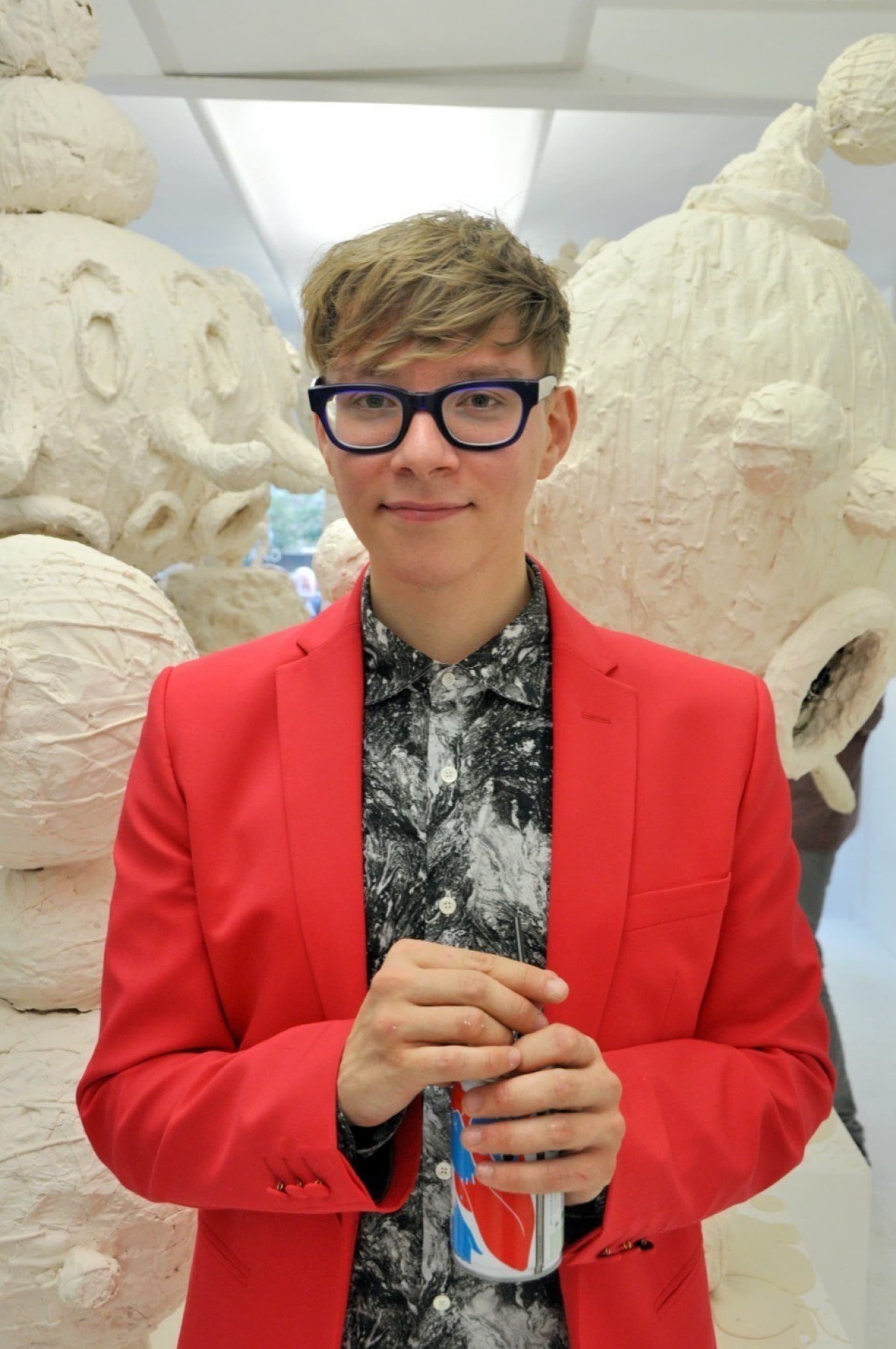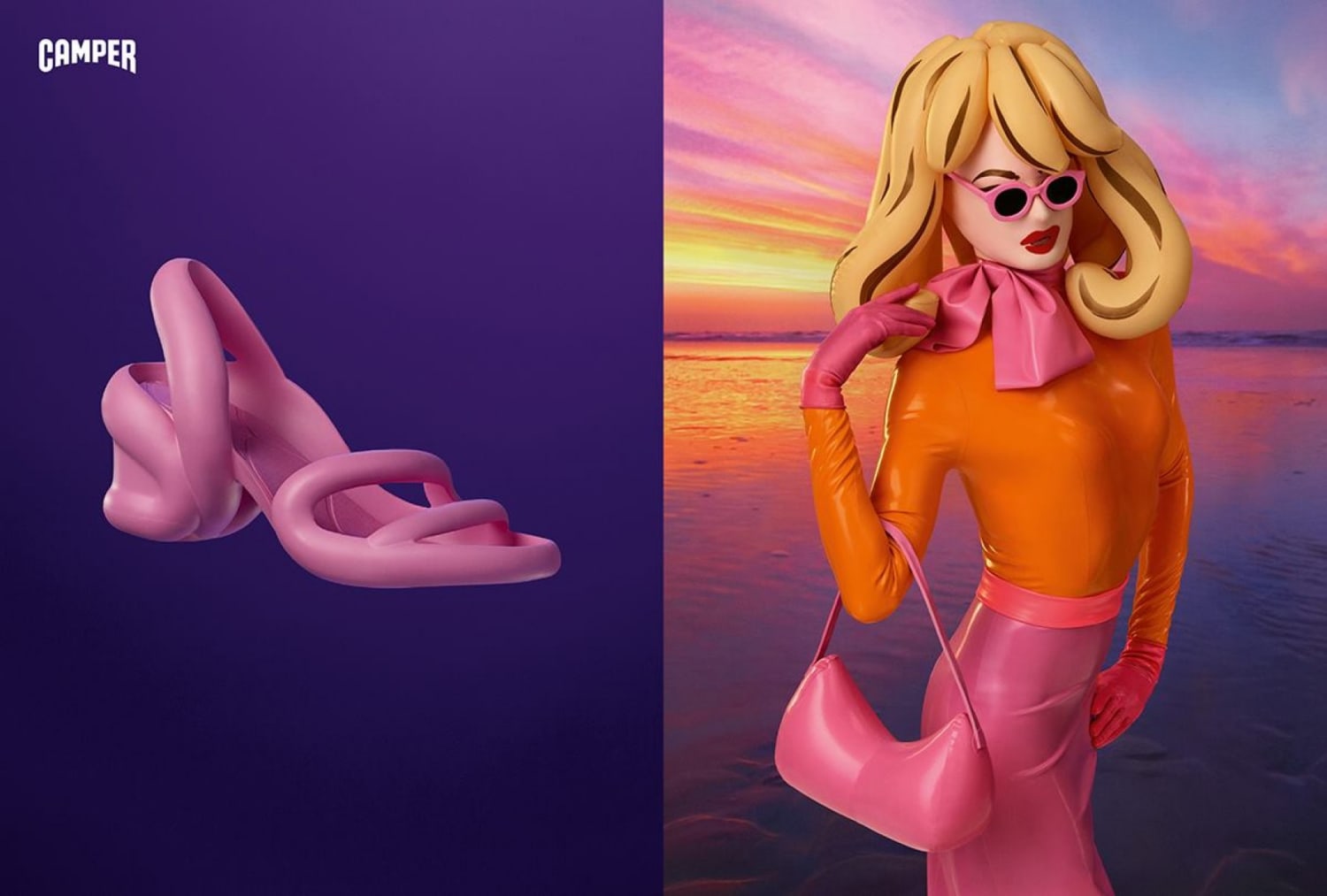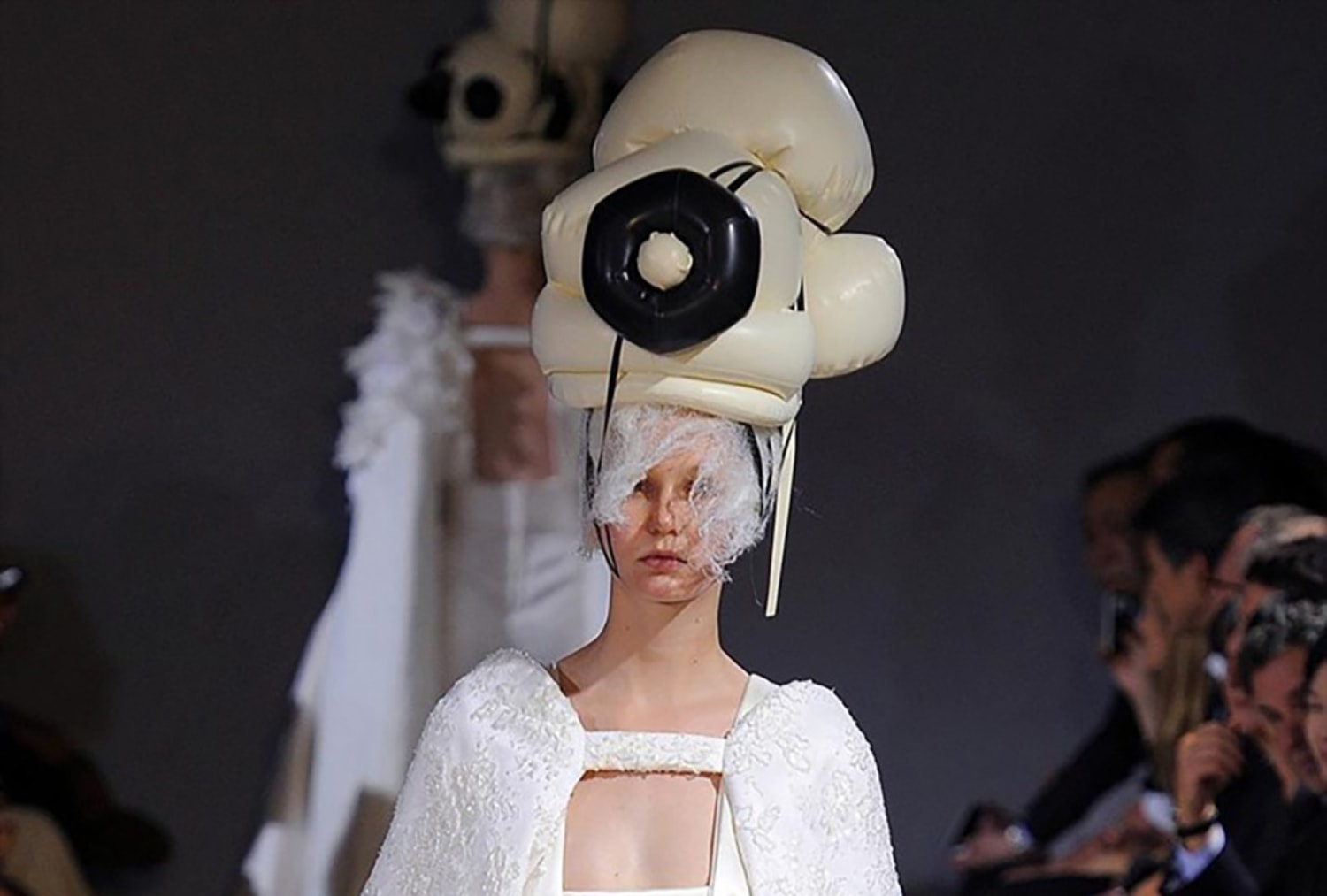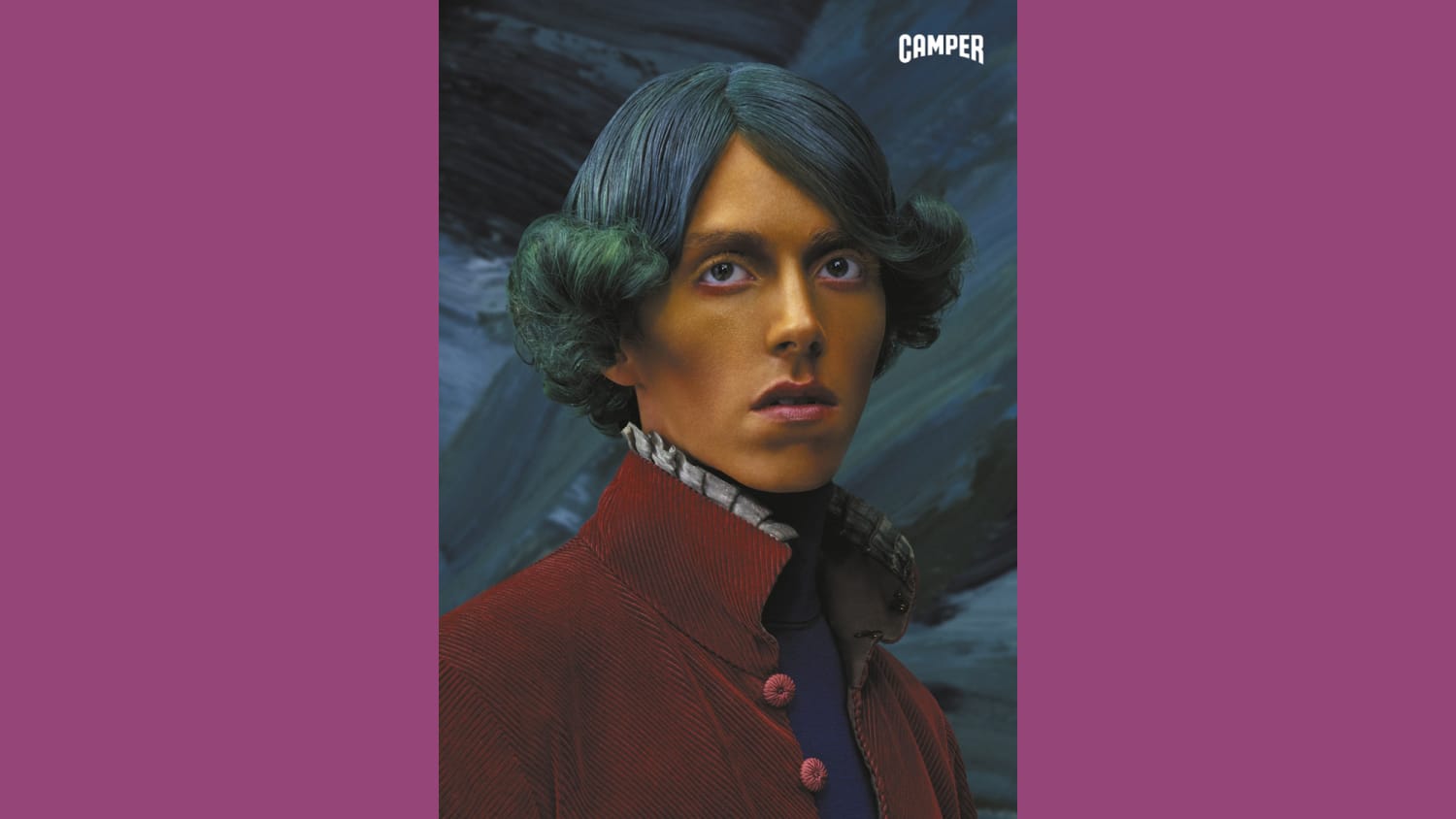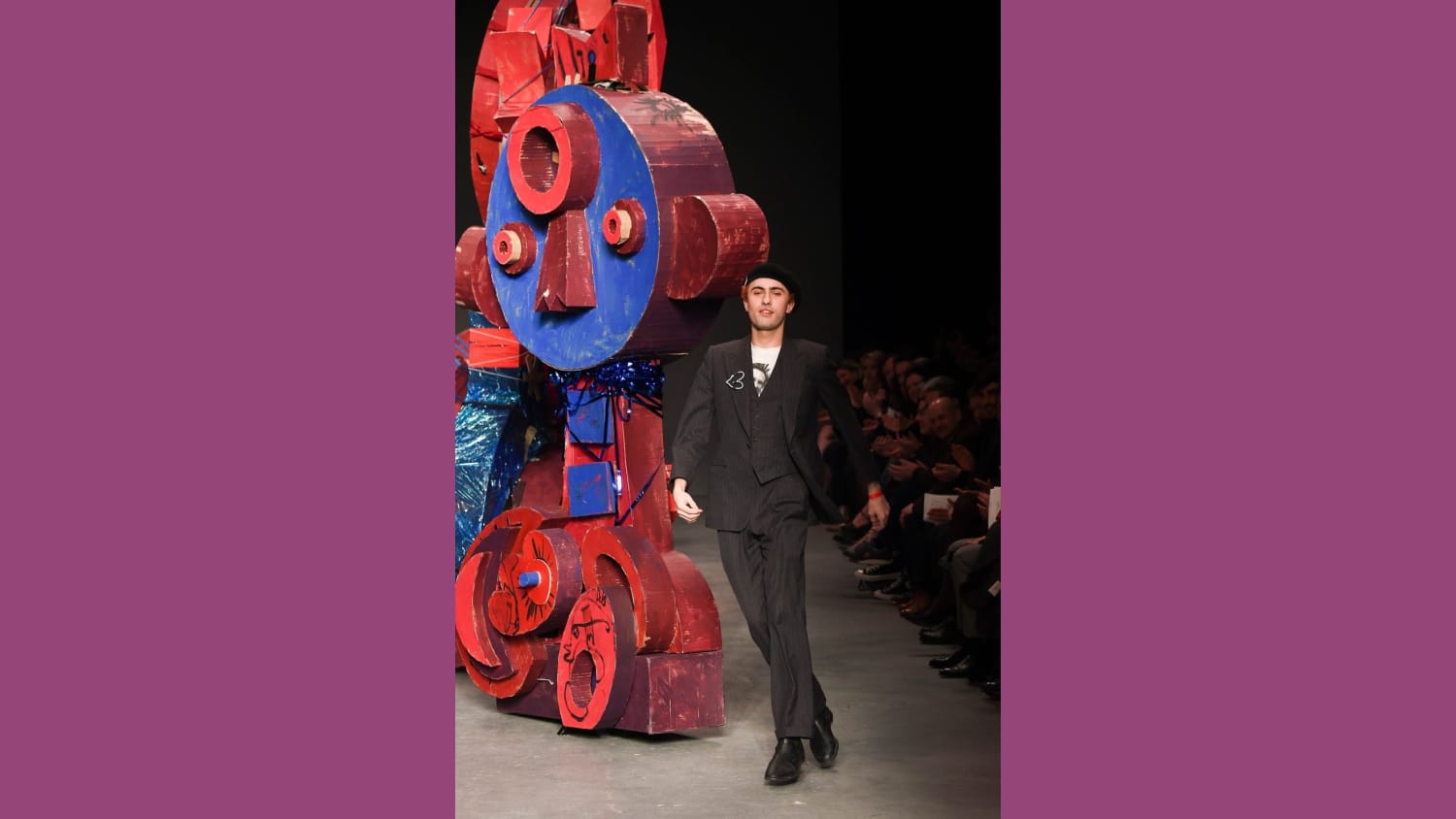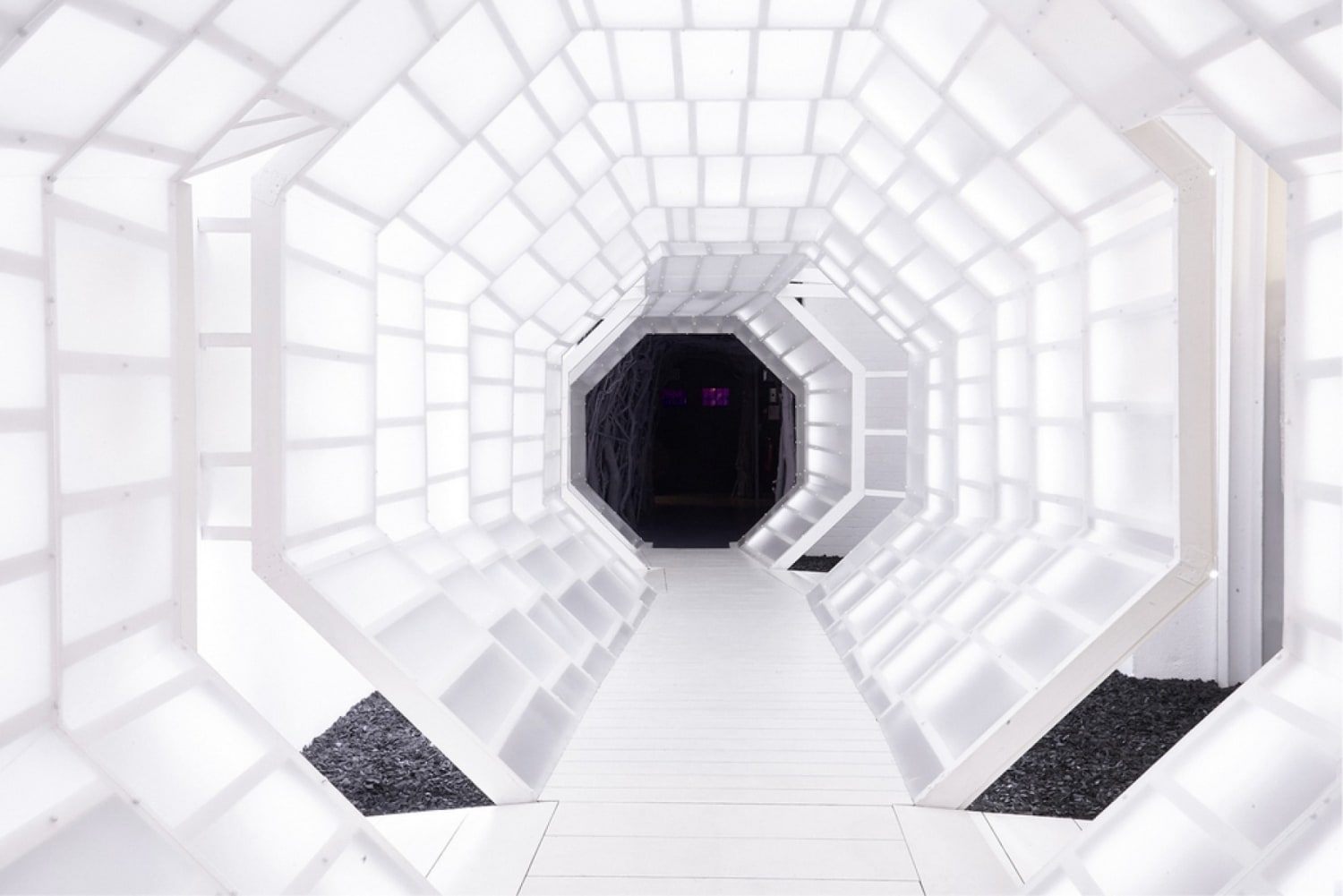What led you to become a set designer?
I studied theater, and at the time I really hated it, so when I graduated I started out doing everything but theater. From graphic design to print design to shoe design, pretty much anything I could get my hands on. That was my day job. What I was really passionate about was making things, like masks, or weird objects for people to hold. By day I was the graphic designer, by night I was mask and costume making. As the years went by it turned into one big job. Now it all goes side by side.
Your clients are predominantly fashion brands—how did that come about?
I started working in editorial, with the likes of Jacob Sutton and Matt Irwin, and started to work for Dazed and Confused, Another Magazine and iD. I worked on their props and gained credibility, and here I am now.
What changes have you noticed in the fashion industry over the course of your career?
In terms of my editorial work I think it’s a lot less creative. At the moment we’re going through a documentary phase. The likes of Harley Weir and Jamie Hawkesworth—they’re the zeitgeist, the look that everyone wants: that warm, documentary-style photography.
And so my crazy masks and the horse-ridden sets have been put on the backburner. These things go through cycles. I think the more creative stuff is further away from editorial opportunities. At the moment I’m not allowed to make the crazy headpiece or the crazy set. However, I recently had the opportunity to work on something very bonkers for Camper, which was an all-singing and all-dancing set. We were throwing slime at guys, painting people like aliens—that was a real treat. It’s been a long time since I was able to go in that direction.
